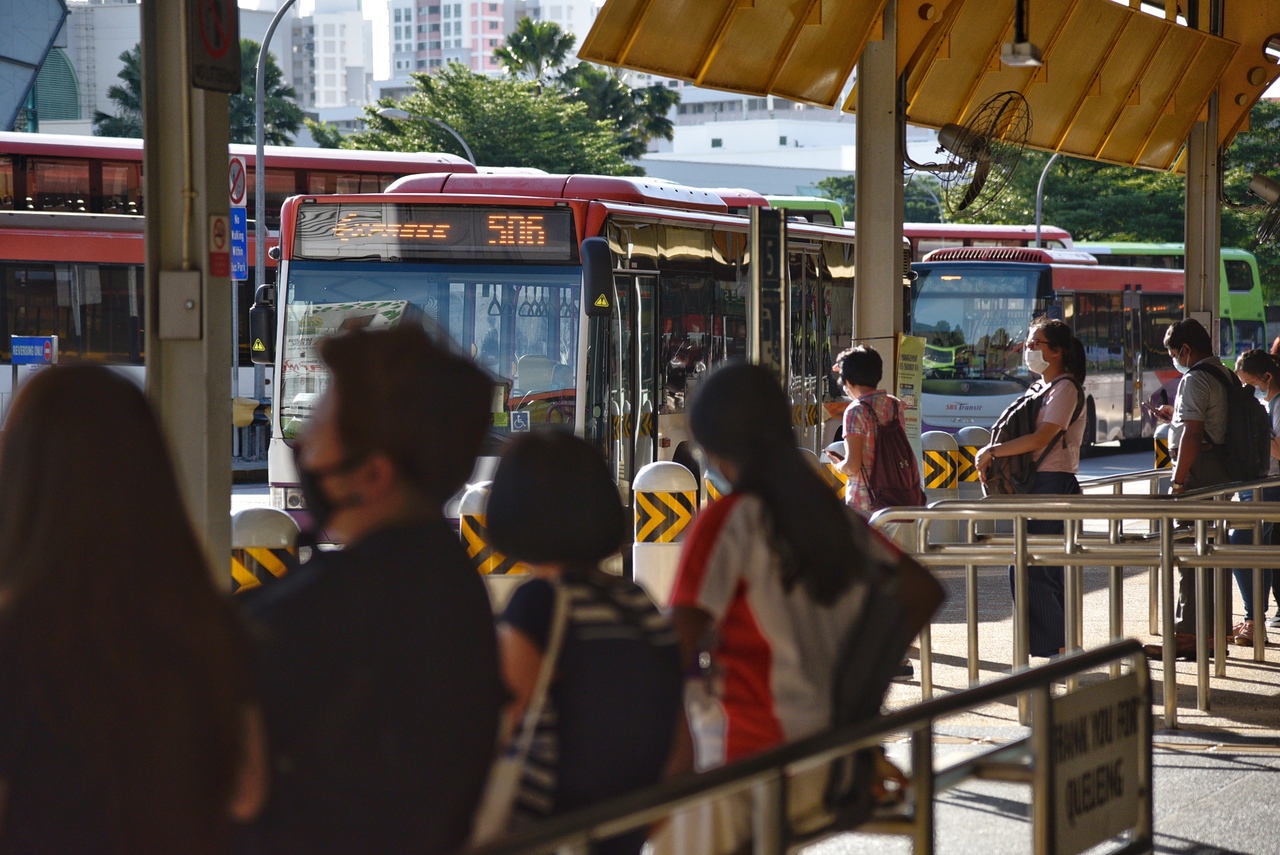Budget debate: $9.5 million saved yearly by shortening 3 bus routes, says Chee Hong Tat to Gerald Giam
Sign up now: Get ST's newsletters delivered to your inbox

The three bus services had seen a sustained drop in ridership after stage 3 of the Downtown Line opened in 2017.
ST PHOTO: DESMOND WEE
Follow topic:
SINGAPORE - Shortening three bus services will save $9.5 million of subsidies a year which can be reallocated to new bus routes, said Senior Minister of State for Transport Chee Hong Tat.
He was responding on Wednesday (March 9) to Workers' Party MP Gerald Giam (Aljunied GRC), who raised the issue of changes to bus routes 22, 66 and 506 that affected his residents living along Bedok Reservoir Road.
Mr Giam had said that the Land Transport Authority (LTA) should strive to retain trunk bus services as these serve many elderly and disabled residents, and suggested switching to smaller buses or extending bus intervals instead of removing services.
Mr Chee noted that the three bus services, which LTA shortened on Dec 12 last year, had seen a sustained drop in ridership of between 32 per cent and 55 per cent for parts of the routes after stage 3 of the Downtown Line opened in 2017.
Services 22 and 66 ran from Ang Mo Kio to Tampines and from Jurong East to Bedok respectively, while service 506 was an express service from Jurong East to Upper East Coast.
LTA amended the route of service 65 in Tampines so commuters would still have connectivity between Tampines Avenue 4 and Bedok Reservoir Road after service 22 was shortened, he added.
Mr Chee said LTA has to "regularly trim and reallocate excess capacity" to keep overall costs manageable for commuters and taxpayers.
He said LTA does operate many services with low ridership that run at a loss.
These are subsidised - to the tune of $1 billion a year - because they provide the "necessary connectivity for commuters in some areas who otherwise will not have alternative transport options", he said, adding that some trunk services are also retained for network resilience.
Turning to bus services with lower ridership that run parallel to MRT lines, he noted that many commuters prefer to take the MRT for longer journeys and use buses as feeder services.
They enjoy lower fares and shorter journeys as a result, he said, citing how a trip from Bedok North to MacPherson via a feeder bus service and Downtown Line would take around 25 minutes compared to 42 minutes via service 66.
Mr Chee said LTA had reduced service frequency for the three bus routes where possible and switched from double-deck to single-deck buses to reduce costs, before deciding to shorten them.
However, the cost reductions were "not very significant" as running a bus service still requires drivers to work in shifts and a technical crew to maintain the buses, he added.
To continue operating the three services without changes would mean an additional $9.5 million in subsidies per year, he said, adding that retaining trunk services to the extent that Mr Giam proposed "will not be financially prudent and sustainable".
The authorities had previously rationalised bus routes, including four services in Bukit Panjang in August 2020 that plied along the Downtown Line.
Mr Giam later asked if LTA could increase the frequency of feeder services, noting that the route changes left his residents with only service 228 to get to Bedok Interchange, and many had told him the bus intervals of 15 minutes or more were too long.
He also asked if it was possible to switch to smaller buses as a compromise instead of shortening trunk services, so as to serve senior and disabled commuters.
Responding, Mr Chee said service 228 was around 70 per cent to 75 per cent full during peak periods at one point. Following Mr Giam's feedback to LTA, service frequency has been increased. Waiting time from 6am to 6.45am is around five minutes and on most days, the buses are about 25 per cent full, he said.
To reduce waiting time, Mr Chee also suggested that commuters refer to the MyTransport.SG mobile app to plan their journeys, although he acknowledged that the elderly may need help to use the technology.
On the use of smaller buses, he said this may not lead to lower costs. This is because the vehicles will still require drivers and maintenance staff, on top of the cost of acquiring the new smaller buses and the necessary training needed.

